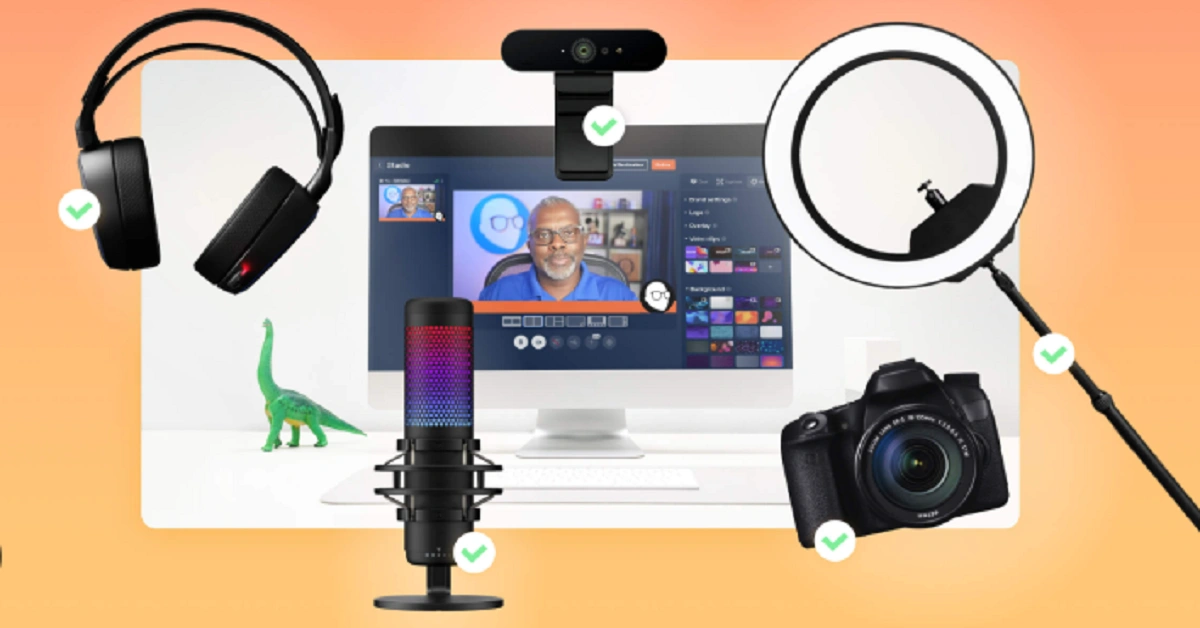Does this sound familiar? You’re excited about interviewing that perfect guest for your stream, but a few minutes in, their audio starts cutting out like a bad cell phone call from 2003. Live streaming with remote guests can elevate your content from a solo show to dynamic conversations, but it can also serve up technical nightmares that make you question your life choices.
Don’t worry. With the right approach, you can turn those potential disasters into smooth, professional streams that keep your audience engaged and coming back for more.
Setting Up Your Technical Foundation
When you’re live streaming with remote guests, keep in mind that your internet connection is your lifeline, so treat it like one. You need at least 10 Mbps upload speed – not download, upload. That Netflix speed test won’t help you here. Run a proper upload speed test and consider upgrading your plan if you’re cutting it close.
Audio quality will make or break your stream. You can have potato-quality video and still build an audience if your audio is crisp. Invest in a decent USB microphone for yourself – even a $100 Audio-Technica will transform your sound. For guests, well, you can’t control their setup, but you can guide them.
Pre-Stream Guest Coordination
You wouldn’t show up to a dinner party without telling the host about your dietary restrictions, right? The same principle applies here. Send your guests a detailed prep email 48 hours before your stream.
Your guest checklist should cover the basics:
- Find a quiet space with decent lighting (facing a window works wonders)
- Use wired internet if possible – WiFi can be fickle during important moments
- Close unnecessary browser tabs and applications
- Have your phone number handy for emergency contact
Schedule that tech check 15-30 minutes early. This isn’t just troubleshooting time – it’s relationship-building time. You’ll both feel more comfortable when you go live, and comfortable guests make better content.
Managing the Live Experience
Once you’re live, your job transforms from tech support to talk show host. Keep the energy up and the conversation flowing, even when Murphy’s Law inevitably kicks in.
If you can swing it, bring in a co-host or have someone monitoring behind the scenes. They can handle chat questions, watch for technical issues, and keep things moving if you get pulled into production problems. This lets you focus on what matters most – creating engaging content with your guest.
Prepare some conversation bridges for those awkward technical moments. When someone’s audio cuts out or their video freezes mid-sentence, you need smooth ways to keep your audience engaged while sorting things out behind the scenes.
Handling Technical Difficulties Gracefully
Here’s a hard truth: something will go wrong during your stream. Maybe not today, maybe not next week, but eventually your perfectly planned show will hit a technical snag.
When it happens, acknowledge it briefly and move on. Your audience gets it – they’re watching live content, not a Hollywood production. A simple “Looks like John’s having some connection issues – while we get him back, let me share what he told me earlier about…” keeps things professional without dwelling on problems.
Keep multiple communication channels open with your guests. Text messages, phone calls, even a backup Zoom room can save your stream when your primary platform decides to take a coffee break. Brief your guests on these backup plans during your pre-stream chat.
Building Authentic Connections
Technology should enhance relationships, not replace them. Focus on creating genuine moments that translate through whatever platform you’re using.
Ask follow-up questions that show you’re really listening. The magic happens in those unscripted moments when your guest says something unexpected and you dive deeper instead of moving to your next planned question.
The best remote streams feel like conversations you’d want to eavesdrop on at a coffee shop – except now you’re broadcasting that intimacy to your audience. Master the technical basics, but never forget that great content comes from great connections.
